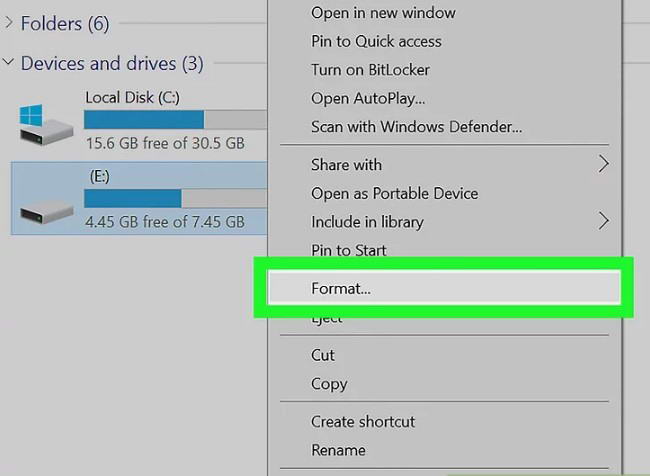
FORMAT FLASH DRIVE WINDOWS HOW TO
How to format a USB drive: allocation unit sizeĪs well as choosing a disk format, Windows also invites you to specify an “Allocation unit size”. For historical reasons, Windows won’t offer FAT32 as an option if your disk is larger than 32GB, but you can format a disk of any size by opening a Command Prompt and typing format h: /fs:fat32 /q, where h: is the letter of your removable drive and the /q parameter specifies a quick format – assuming you don’t want to wait around for Windows to check each sector of the drive for errors.

On a Mac, you can format any disk as FAT32 by simply choosing “MS-DOS (FAT)” from the dropdown menu in Disk Utility before you click Erase….

This is supported by all versions of Windows and OS X (as well as Linux), but it has the drawback of not supporting individual files larger than 4GB – which can be a pain if you work with large video files or databases. If you need compatibility with systems that are older than this, you’ll need to fall back to the ancient FAT32 format. In most cases we recommend you select Microsoft’s exFAT format: this will give you full read and write access in both Windows (Vista or later) and OS X (Snow Leopard 10.6.5 or later). You can choose this from the drop-down menu in Windows’ Format dialogue, or in the Erase pane of Disk Utility. To use your USB disk on both Windows and OS X, therefore, you’ll need to use a different filesystem. There are free drivers available, but again these are limited to read-only access. However, neither is suitable if you want to move files back and forth between Macs and PCs: OS X can read NTFS volumes, but it can’t write to them, while Windows in its default configuration can’t access HFS+ disks at all. These formats are sensible defaults because they support all the features of their respective operating systems, such as native compression and encryption.
FORMAT FLASH DRIVE WINDOWS MAC OS
If you follow the instructions above then Windows will, by default, format your disk using Microsoft’s NTFS filesystem, while a Mac might suggest the Mac OS Extended filesystem.


 0 kommentar(er)
0 kommentar(er)
